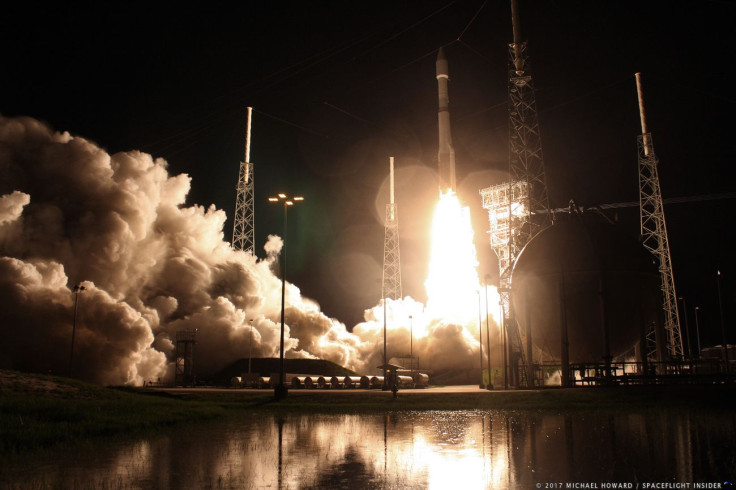Top-Secret NROL-52 Satellite Launched Aboard Atlas-V Rocket After 10-Day Delay

After a series of satellite launches last week, the United States launched a second secret spy satellite Sunday. The NROL-52 satellite was taken into orbit by the Atlas- V rocket from Cape Canaveral Air Force Station in Florida, three weeks after the NROL-42 mission.
The NROL-52 satellite rode a United Launch Alliance (ULA) Atlas V rocket into space after more than a week ’s delay due to weather and a suspect telemetry transmitter that had to be replaced, according to a report by Space.com.
This latest mission comes after the NROL-42 reconnaissance satellite launch on Sept. 24 from Vandenberg Air Force Base in California. The Atlas V rocket was used there too.
The indigenous NROL-42 and NROL-52 were researched and commissioned by the U.S. National Reconnaissance Office. The payload and its function remained classified during and after the launch. NRO missions always follow high-secrecy protocols, hence the function of the two satellites remain a mystery.
ULA, which provided the rocket for the launch, had cut off the launch video and commentary just five minutes after the lift-off. The details of the mission were not released and the feed ended well before the rocket exited Earth's atmosphere.
The scheduled launch date was overshot by 10 days on five separate occasions as the launch was postponed. The launch was originally scheduled on Oct. 5. The reasons for the delay were cited as the stormy weather in and around the Florida launch site. A report by CBS News also said there were telemetry transmitter issues in the satellite, which also became a contributor.
The Atlas V rocket used the Russian-built RD-180 first-stage engine during the lift-off at 3:28 a.m. EDT. The two solid-fuel strap-on boosters kicked in just a few seconds after the launch to overcome the tough gravitational pull of Earth. The NROL-52 launch marked ULA's seventh mission and NRO’s third mission of the year.
After a series of delays, the rocket took-off without any hiccups early Sunday. The early stages of the mission — that were broadcast live — played out smoothly. The rocket was seen streaking through the air as the boosters kicked into overdrive, propelling the satellite into space. The ULA's mission commentary and logs ended right after the boosters started propelling the system. The mission was declared a success up until that point.
As per the CBS News report, the "identity of the NROL-52 satellite was classified, but a leading independent analyst said the spacecraft likely is the latest in a series of Space Data System — SDS — spacecraft designed to relay imagery from current and future high-resolution optical spy satellites.”
According to the space.com report, the lift-off rounded off a busy week in spaceflight. This launch followed a SpaceX Falcon 9 rocket launch on Oct. 9 from California's Vandenberg Air Force Base. This rocket carried 10 communications satellites to orbit for the company Iridium.
Japan launched the H-2A rocket and China launched a Long March 2D booster on Oct. 9, “which lifted a Japanese navigation satellite and a remote-sensing satellite for the Venezuelan government, respectively,” said the report.
© Copyright IBTimes 2024. All rights reserved.





















